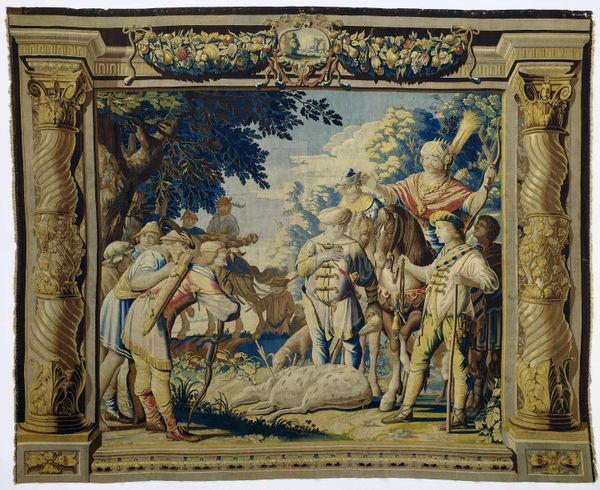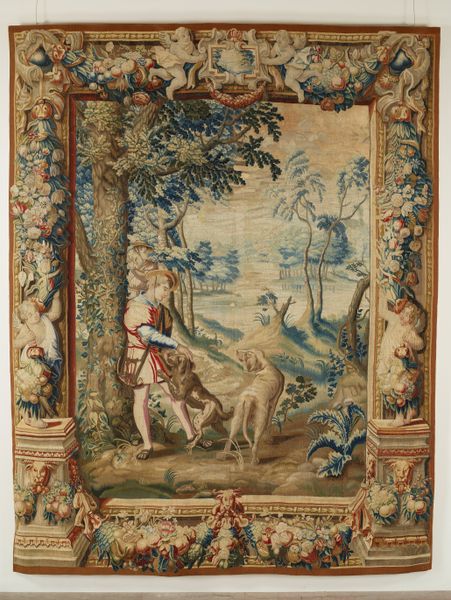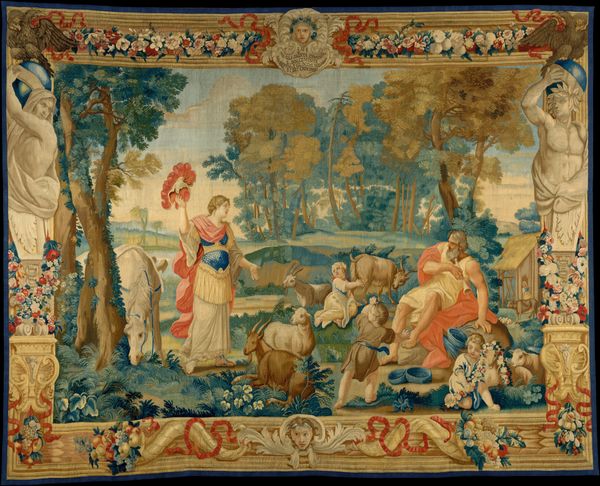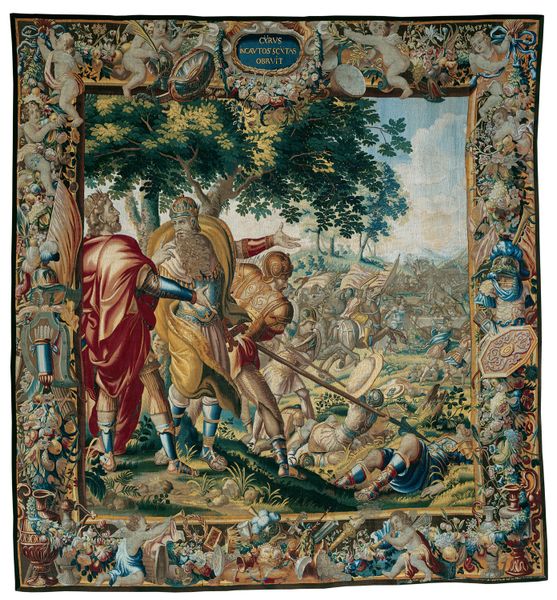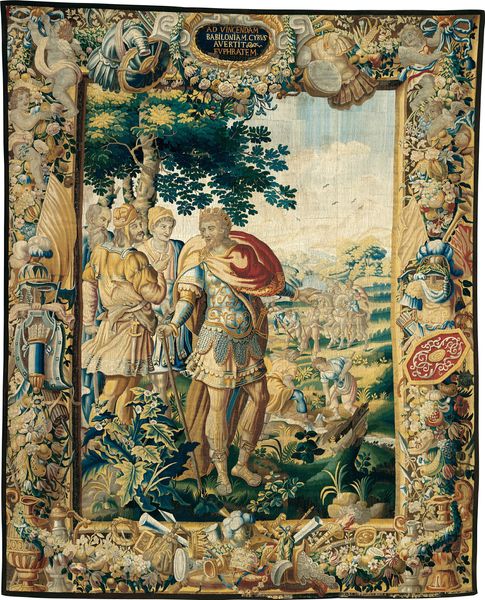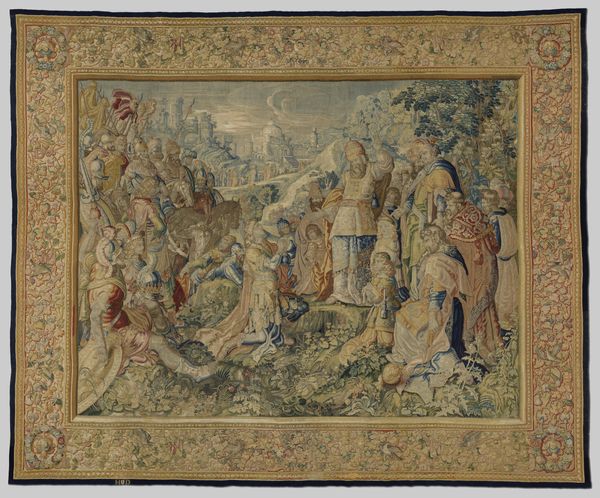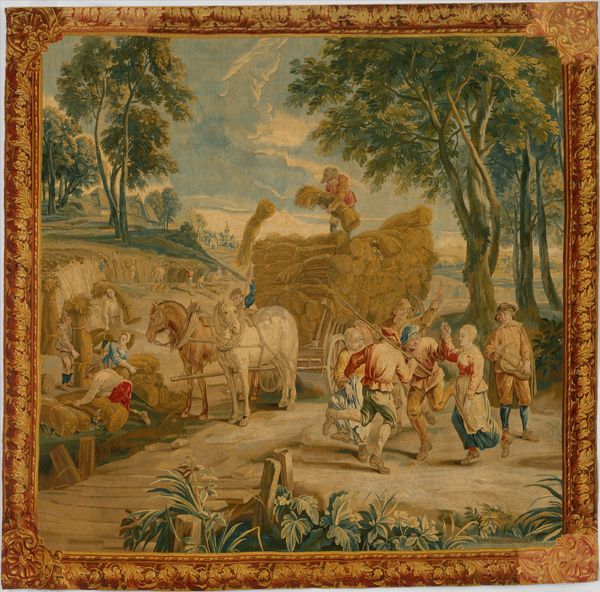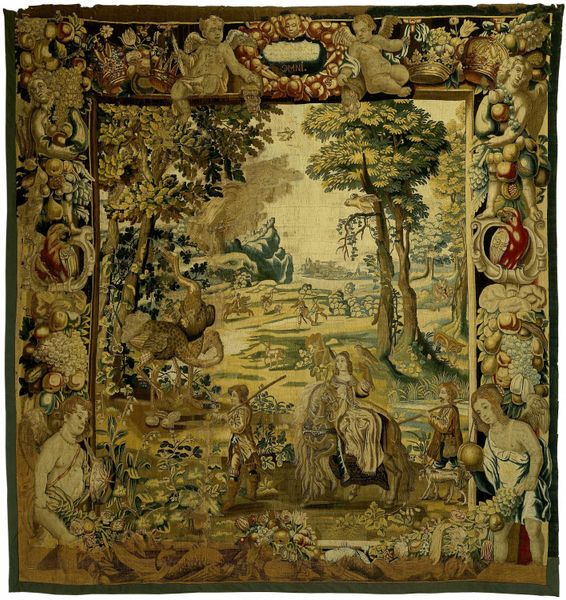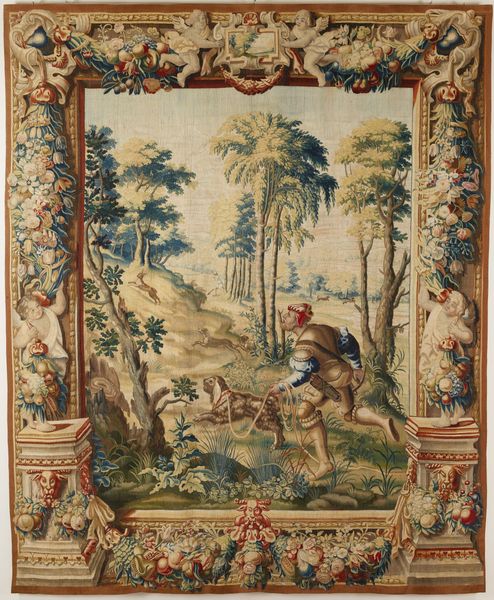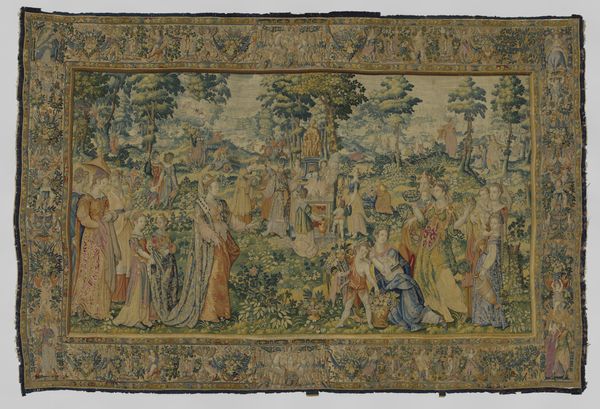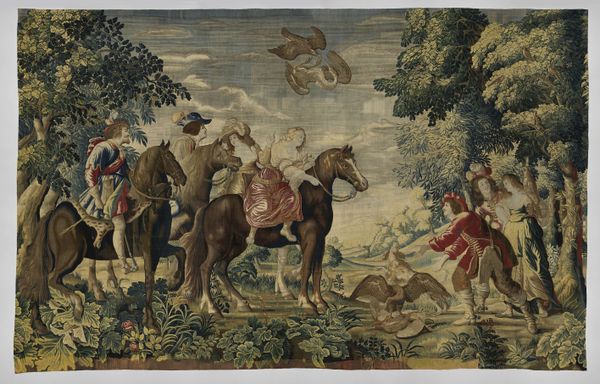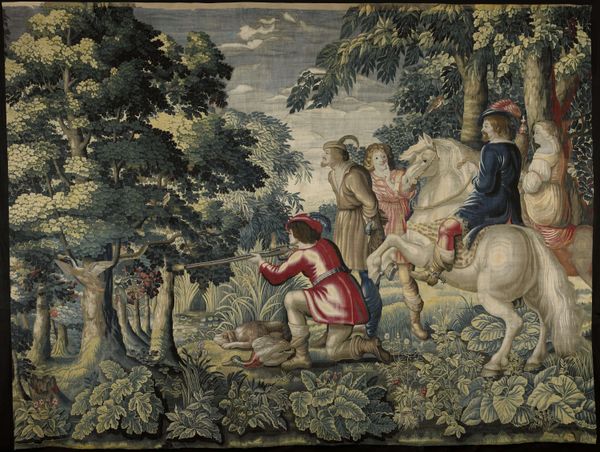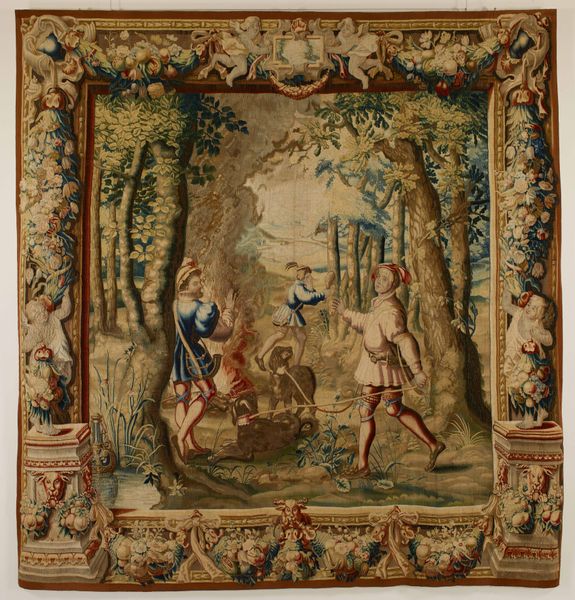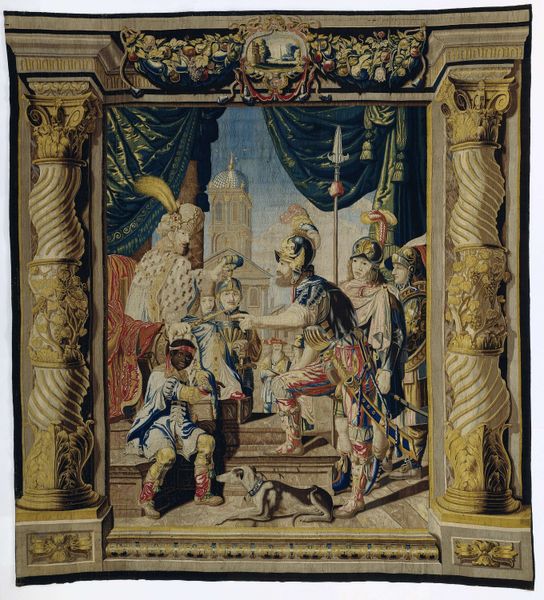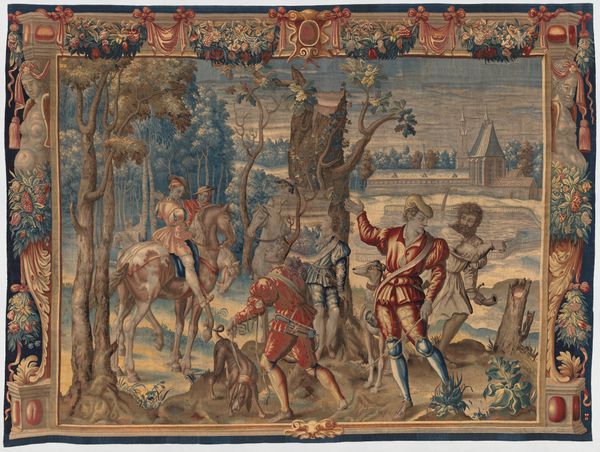
The Blasphemy of Niobe from Scenes from the Story of Diana 1547 - 1559
0:00
0:00
painting, textile, sculpture
#
narrative-art
#
painting
#
textile
#
mannerism
#
oil painting
#
sculpture
#
men
#
mythology
#
painting art
#
history-painting
#
decorative-art
Dimensions: H. 183 x W. 115 inches (464.8 x 292.1 cm)
Copyright: Public Domain
This tapestry depicting The Blasphemy of Niobe was woven in France in the 16th century under the design of Jean Cousin the Elder. Woven tapestries such as this one were very expensive, so they were typically commissioned by wealthy aristocrats. They were displayed in the home as a sign of wealth, and also as a means of insulating stone walls. This tapestry shows the story of Niobe, who boasted that she was more fertile than the goddess Latona, who only had two children, Diana and Apollo. As punishment for this blasphemy, Diana and Apollo killed all of Niobe's children. These stories from classical mythology were very popular at the time, and this tapestry would have served as a warning against hubris and a reminder of the power of the gods. In approaching this artwork as a historian, I would be interested in researching the patronage of this tapestry, the status of tapestry weaving in 16th century France, and the ways in which classical mythology was used to reinforce social hierarchies.
Comments
No comments
Be the first to comment and join the conversation on the ultimate creative platform.
